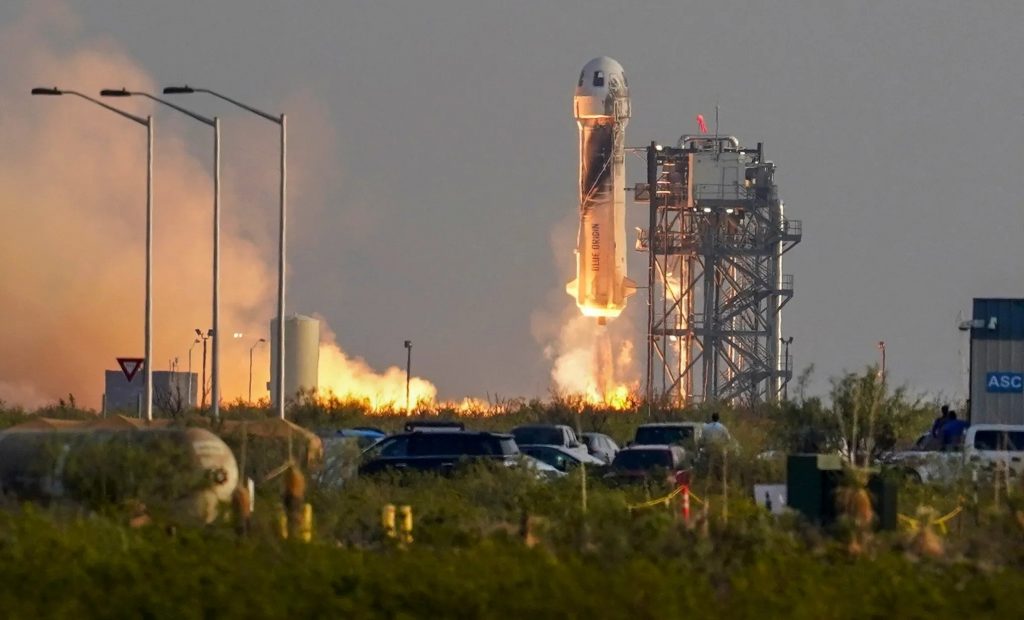In a rather unsurprising turn of events, Blue Origin, the renowned space tourism venture led by Jeff Bezos, has found itself under scrutiny due to substantial methane emissions occurring during recent rocket tests. The emissions, observed at the company’s West Texas facility, have reportedly been so extensive that discernible plumes of methane have been detected from space, according to a recent report by Bloomberg.
Carbon Mapper, a non-profit organization that focuses on monitoring global greenhouse gas emissions made this discovery quite unexpectedly in June. The organization used the data that it collected from the instruments and equipment that was present on the International Space Station. Furthermore, they made a guess about Blue Origin’s discharge rate which they stated was an approximate hourly discharge of 1.5 metric tons of methane. The resultant emissions formed a conspicuous cloud visible on the organization’s emission map.
Precise details regarding the duration of the emissions remain elusive due to limited data availability. However, Blue Origin has been forthcoming about their utilization of methane in their operations. The company’s leading rocket engine is the BE-4 which mostly relies on liquefied natural gas (LNG) for propulsion.
“We frequently transfer LNG from our suppliers into storage tanks at our engine test stands,” the spokesperson told Bloomberg. “Everything operated normally.”
The scope of Blue Origin’s methane emissions had remained relatively undisclosed until Carbon Mapper’s recent revelation. Yet, despite these findings, the exact extent of the emissions remains somewhat ambiguous. Additional insight, however, emerged from a recent discovery by Bloomberg: an air permit application submitted by Blue Origin in 2020 to the Texas Commission on Environmental Quality. This document estimates an annual emission of approximately 3.4 million cubic feet of LNG, equating to roughly 60 tons of methane.
Methane, a potent greenhouse gas, holds significant implications for climate change. The International Energy Association attributes nearly one-third of global temperature rise to methane emissions. While Blue Origin’s emissions might appear fractional in the context of global figures — with the energy sector releasing 135 million tons of methane in 2022 — the issue demands careful consideration.
Blue Origin is not the sole space enterprise to employ methane as a rocket propellant; SpaceX’s Starship project is a prominent example. The use of methane as a rocket fuel is growing in popularity due to its efficient energy density, optimal performance characteristics, and cost-effectiveness. Consequently, future space endeavors are expected to witness an increased reliance on methane-powered launches.
Although the immediate environmental impact of space travel appears relatively subdued, the exponential growth of the industry raises concerns about its potential to emerge as a significant contributor to pollution. As Blue Origin and its counterparts continue to explore the cosmos, the imperative to strike a balance between technological advancement and environmental preservation becomes ever more pressing.

